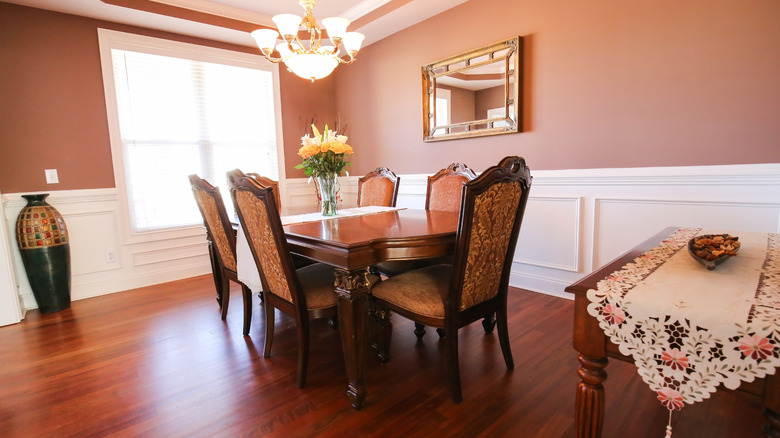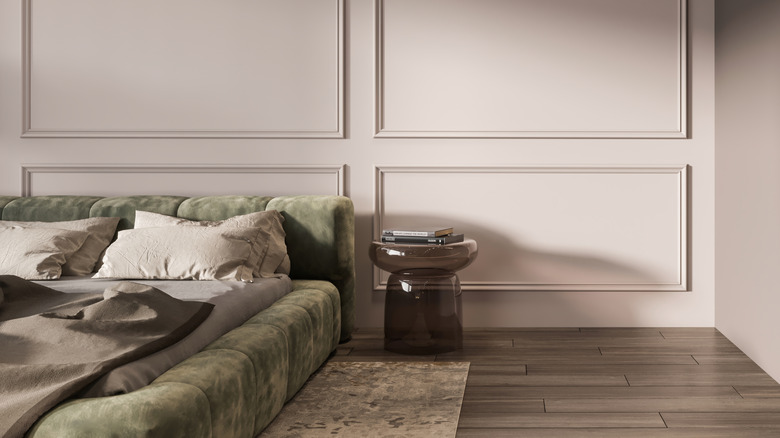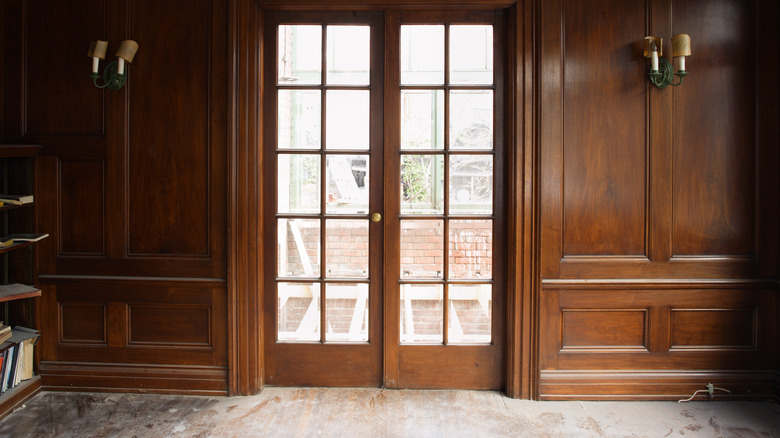The Best Type Of Wood And Materials For DIY Wainscoting
Adding wainscotting panels to your home's walls gives the space a touch of elegance and class. Installing these panels is a relatively simple DIY task, too. What's less simple is choosing which material to get your wainscoting in. Since you're researching the subject already, you've probably come across some wainscoting installers recommending Medium Density Fiberboard (MDF) as the material of choice. True enough, MDF has a few advantages, like low cost, and the fact that its surface has no flaws and always comes primed, saving you one step during finishing. But there are a few issues with using MDF as a DIYer. For one, the dust released when you cut it is tough to get rid of and harmful for health. Also, the nail holes are more prominent, and repairing damaged MDF is impossible. If you're a DIYer, you probably don't want to worry about these obstacles. Instead, you should choose a wainscoting material that's durable, long-lasting, and easy to install.
If you're planning to paint the wainscoting panels and want to save money, one option is to use vinyl, which is both inexpensive and strong. Alternatively, poplar is a long-lasting paint-grade hardwood species that's also easy on the wallet. On the other hand, if you plan to stain your wainscoting, oak and maple are the best options because they're resistant to damage during (and after) installation. We take a more in-depth look at each of these materials below.
Best materials if you will paint your wainscoting
There are plenty of different paint colors you can choose to make your wainscoting the focal point of a room's design. And, you'll be delighted to know that your paint-grade panel material options are some of the cheapest and sturdiest. Vinyl (or PVC) is the top choice. Wainscoting panels made from vinyl are incredibly robust and resist all kinds of damage. Whether it's inflicted by you during installation, or by your household once the panels are up, the material resists scratches, dents, and cracks handsomely. Better yet, vinyl wainscotting generally costs a mere $2 per linear foot — that's two times less than what you'd pay for a wood alternative. That said, to hide the plastic nature of these panels, you should finish them with a matte paint to give them a bit of texture.
Looking for something that resembles wood more than vinyl does? In that case, stick with real wood, like poplar. As we explained in the intro, MDF may be a tempting budget option, but it comes with certain hazards during installation and breaks easily — bad qualities for a DIY material. Poplar is an excellent paint-grade wood that's relatively low cost, with some panels available for under $3 per linear foot (that's excluding the cost to install the wainscoting). Poplar is also extremely durable, and if you're using it as the wainscoting material, you'll have no trouble correcting minor imperfections like nail holes after installation.
Best materials for wainscoting you will stain
Stain-grade wainscoting panels are usually made from hardwoods, like oak, maple, and cherry. These species are in demand for staining applications due to their ornate grain patterns, and all have their pros and cons. If you're looking for the most durable stain-grade wainscoting material, maple is an excellent choice. Maple has a relatively high Janka rating, which means that it withstands wear such as scratches and dents. This quality is desirable for DIYers, since it means that you run a very small risk of damaging the wood during installation. Also, this resistance means you can safely use maple in high-traffic areas, like entryways.
Oak — and white oak in particular — is another durable stain-grade species, with a Janka rating just slightly below that of maple. As is the case with maple, the robustness makes white oak a good DIY material, since you're less likely to ruin it during installation. White oak also boasts a good degree of moisture resistance, so it's an excellent candidate for areas with high humidity.
As a DIYer, stay away from cherry. It's a stunning choice for stained wainscoting, and its luxurious, red-brown hue is unmatched. However, staining cherry is incredibly difficult. Its wood blotches easily because of the grain density, and you need to be one savvy DIYer to know how to use wood stain on this species. Instead of trying your luck and possibly ruining cherry panels, you can achieve the dark-scarlet finish by using a darker stain on oak or maple.


